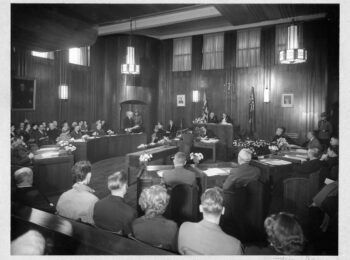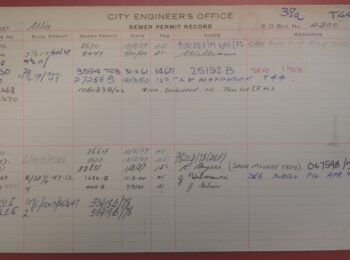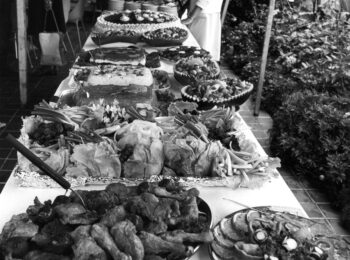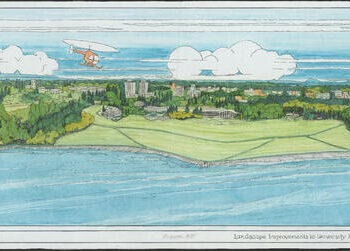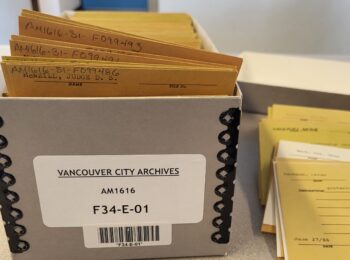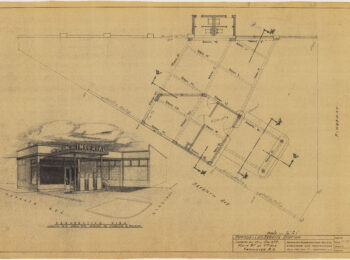The Archives is pleased to announce that records of Vancouver’s first and longest-lived neon sign company, Neon Products, are now available to researchers.
Neon Products was founded in 1927 or 1928 by George Sweny and partners. Sweny was Managing Director from shortly after the company’s founding to 1953 and oversaw tremendous growth in the company through its earliest decades.
In the mid-1970s, Neon Products was acquired by Neonex, a Jim Pattison company, though it continued to operate under its own name until being folded into the larger Pattison Signs Group in the 1990s.
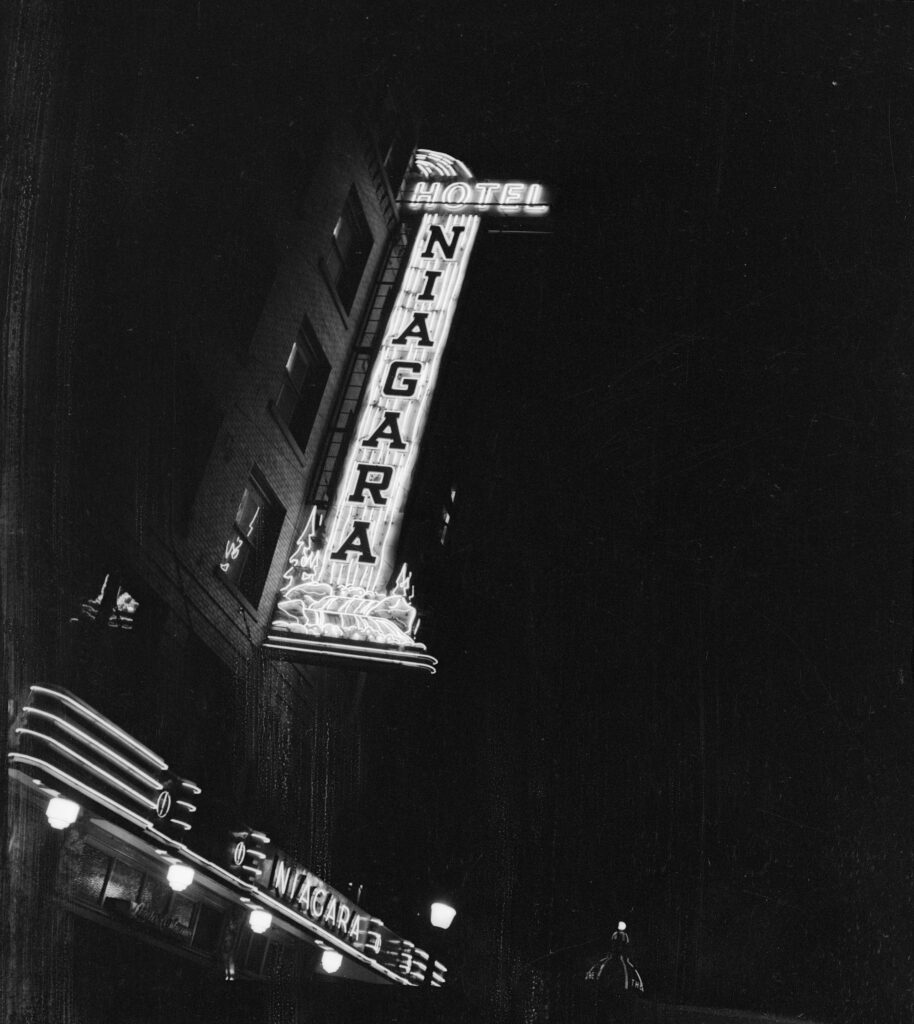
The records donated to the Archives by Pattison Signs are “flimsy files”, largely made up of small sketches of designs with basic production information. The records do not include the factory patterns. The records also do not include files previous to ca. 1945, which do not appear to have survived, nor files opened later than 1964. Most of the earliest records (as determined by job numbers) are undated.
Here is the flimsy for the Niagara Hotel sign in the photo above.
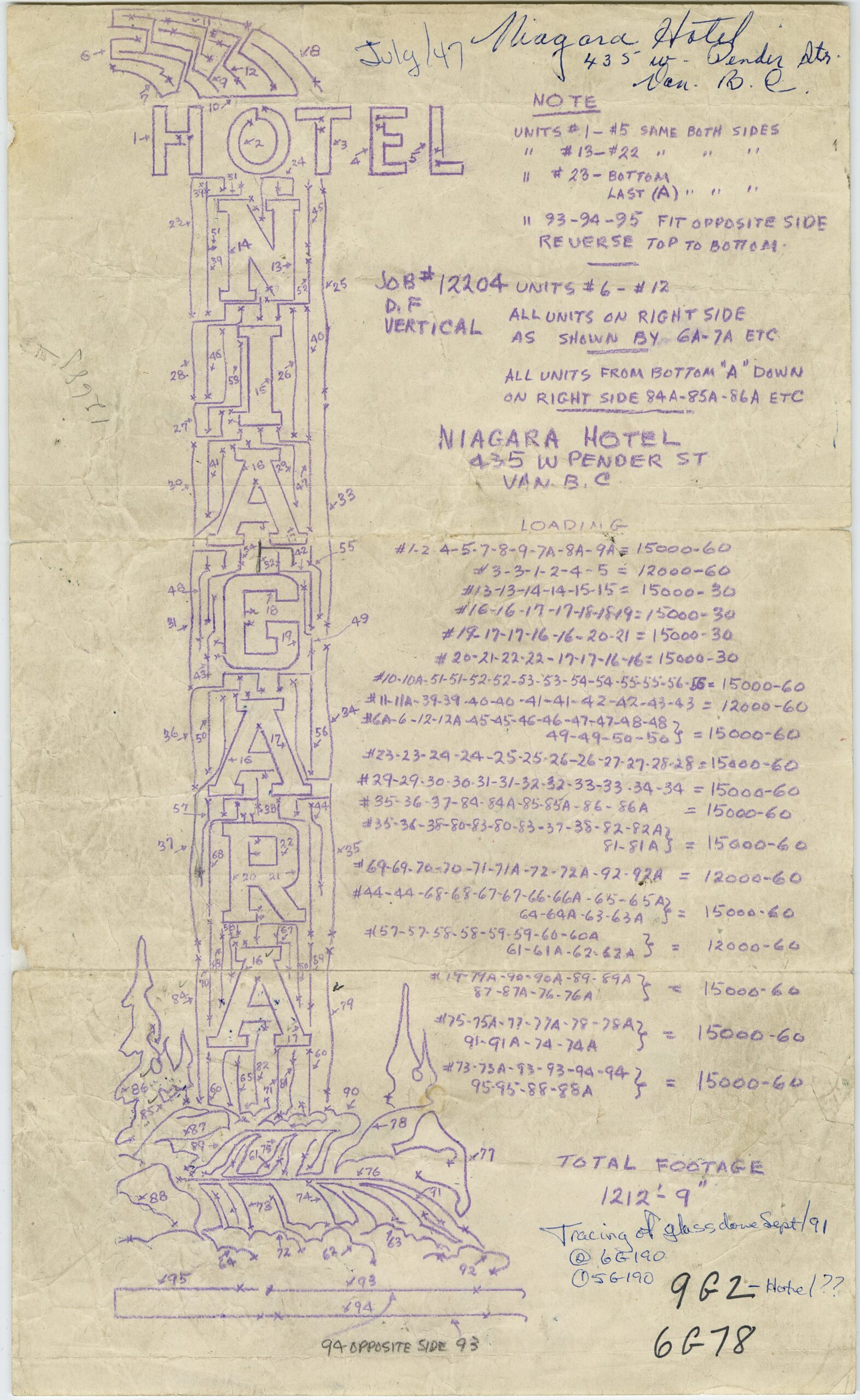
And a colour image taken at night in 1983:
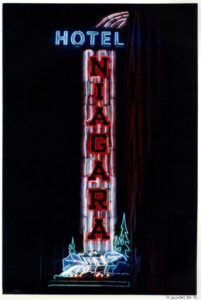
Another example is this flimsy for the Studio Theatre sign on Granville Street:
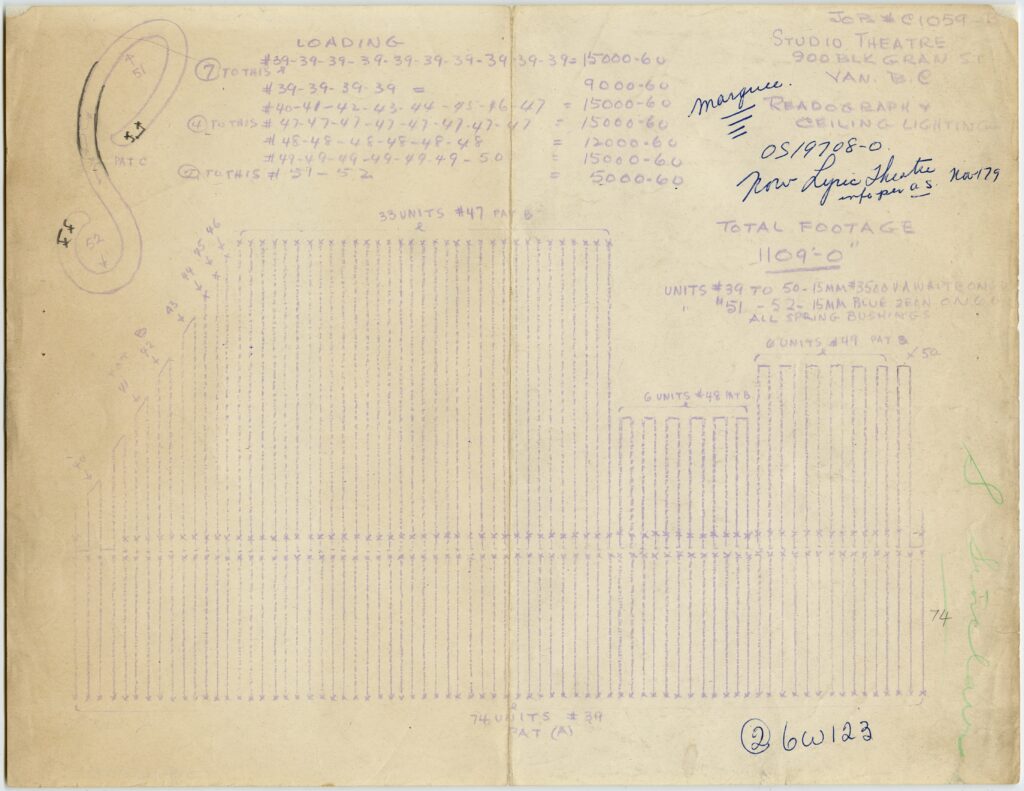
The Studio Theatre can be seen in this streetscape photo of Granville Street taken most likely in 1967:
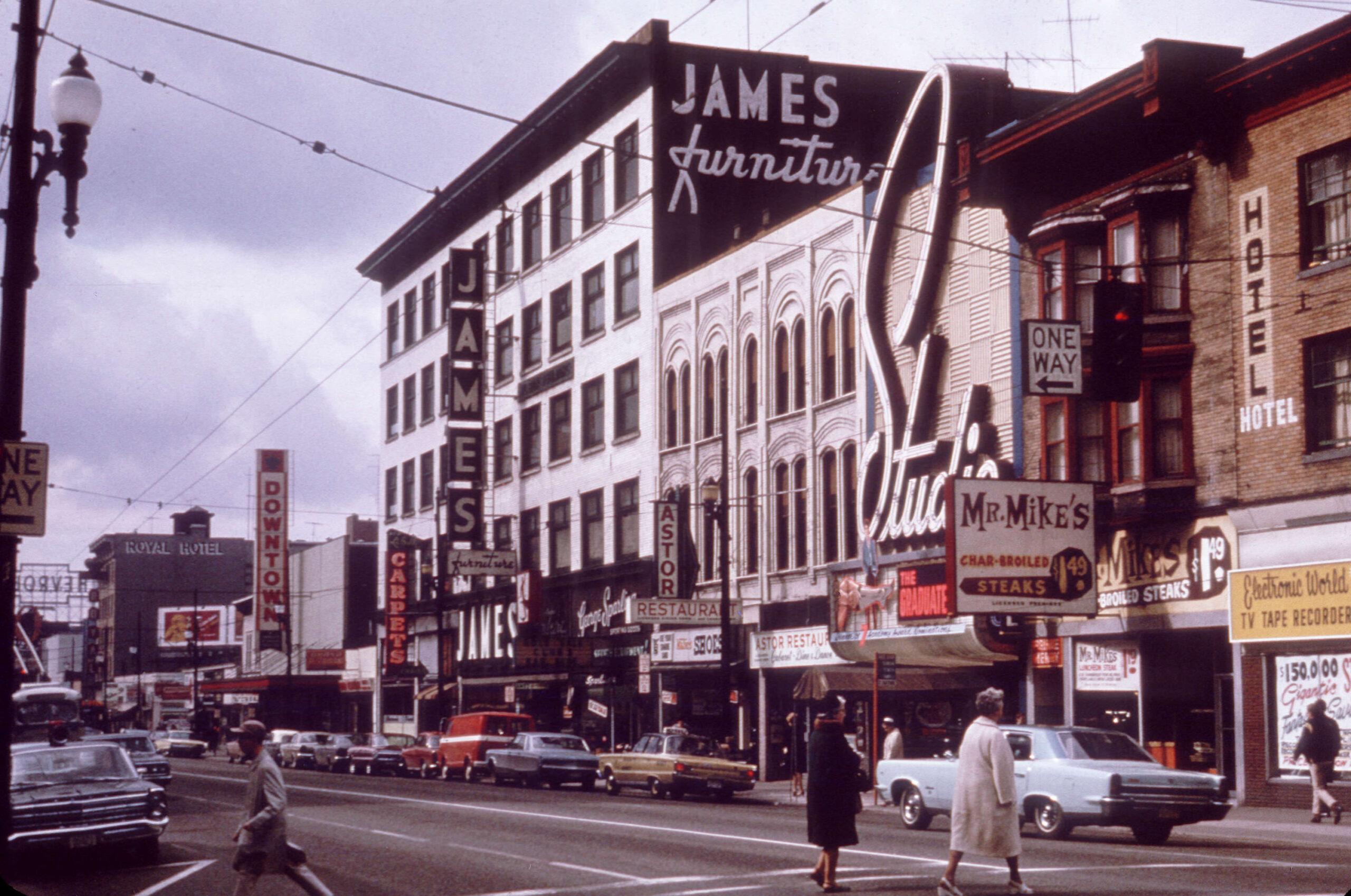
The donated records document a wide range of production work, not just of neon display signage, but of non-neon signage, neon strip lighting, and readographs. A common use of readographs are for movie theatre marquees, such as the one designed for the Stanley Theatre.
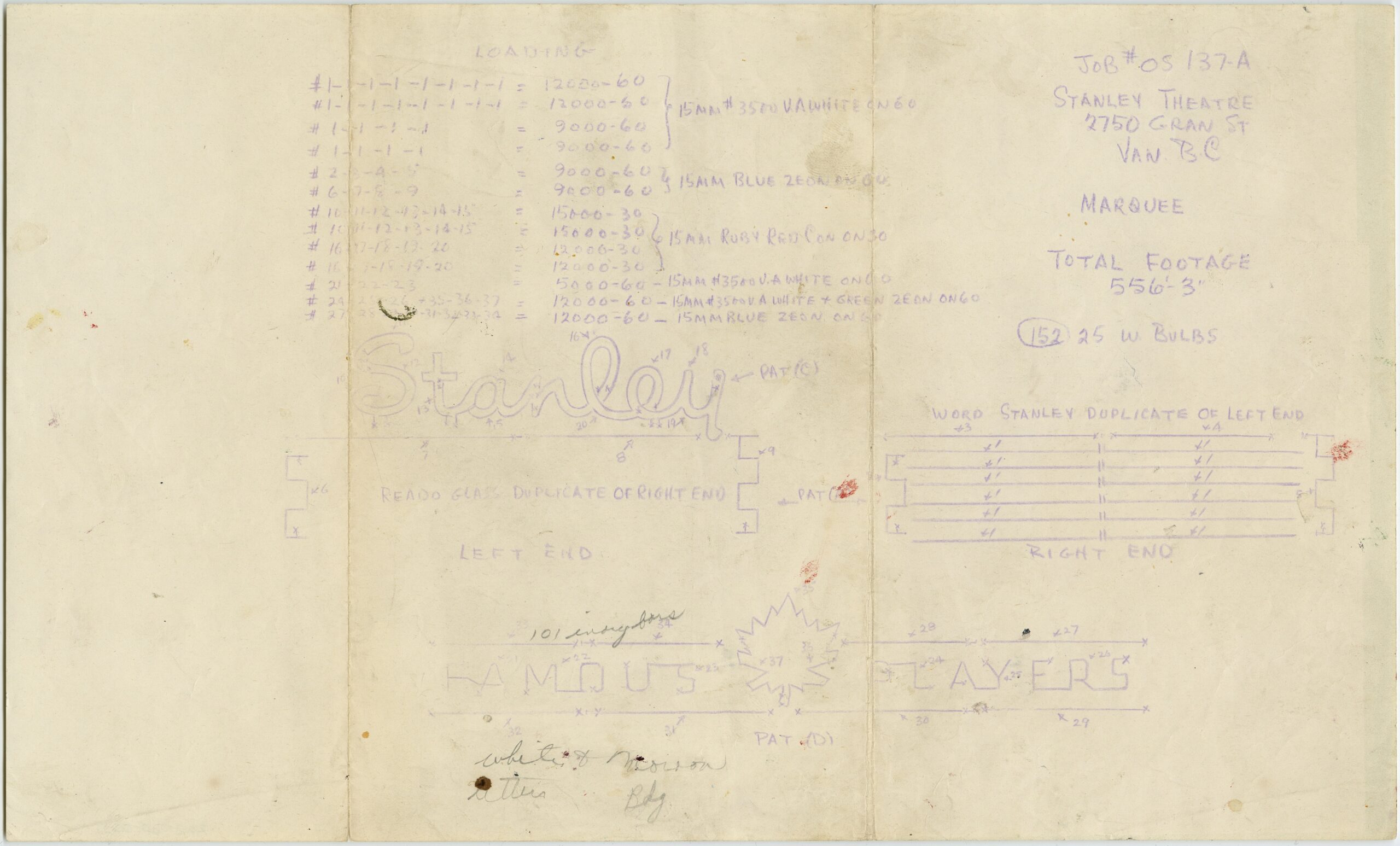
The Stanley’s script signage and readograph are seen in this 1998 photo.
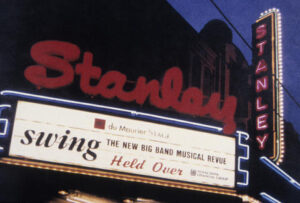
Almost as common as neon signage was the plastic-faced lightbox signs that became more common in the company’s work in the 1960s. The Kuo Kong Silk Company sign is typical of this type of projecting display signage that was not neon-based.
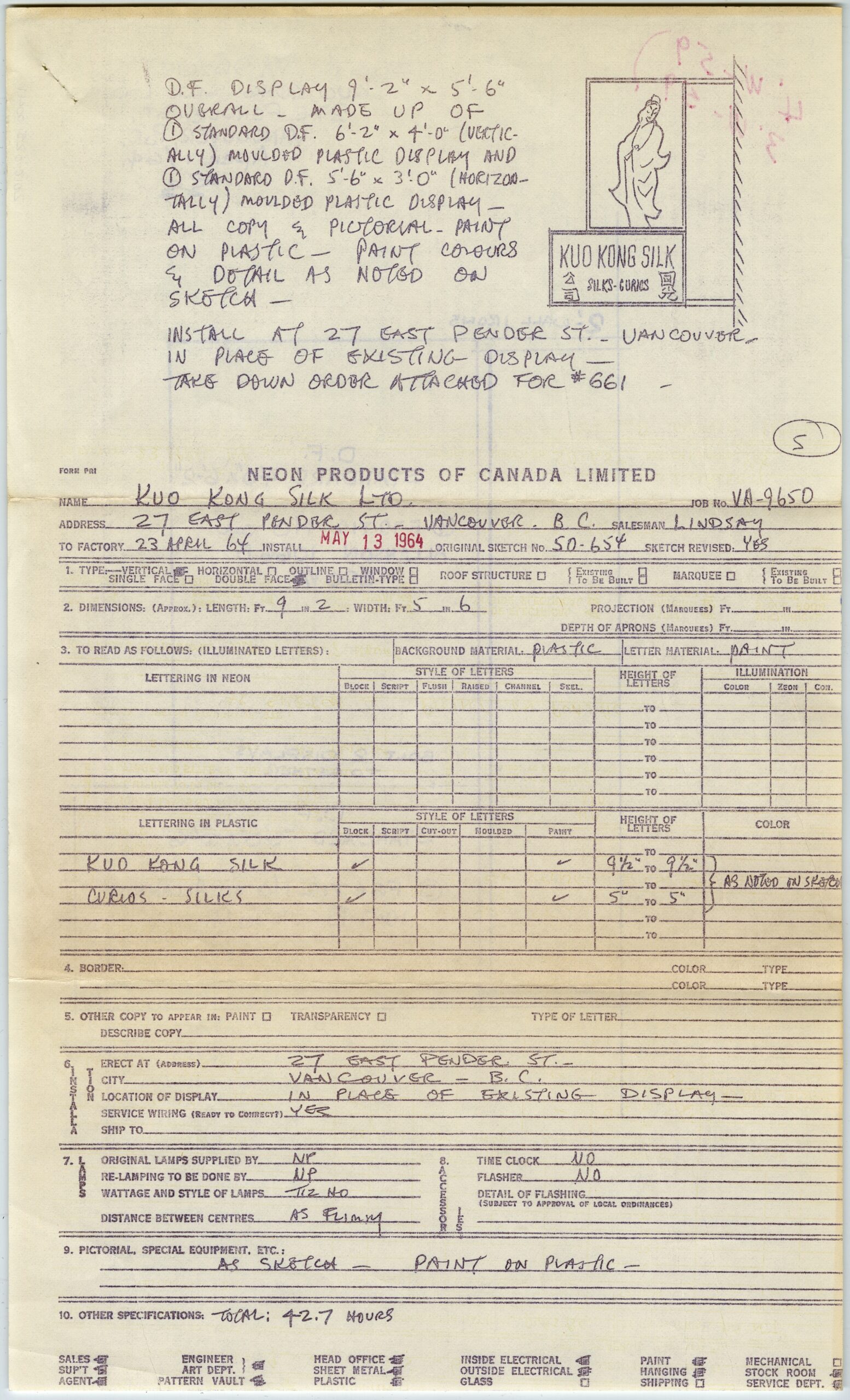
You can see the sign in the middle of CVA 1095-09664, a heritage inventory photo of 27-29 East Pender Street, taken in 1973.
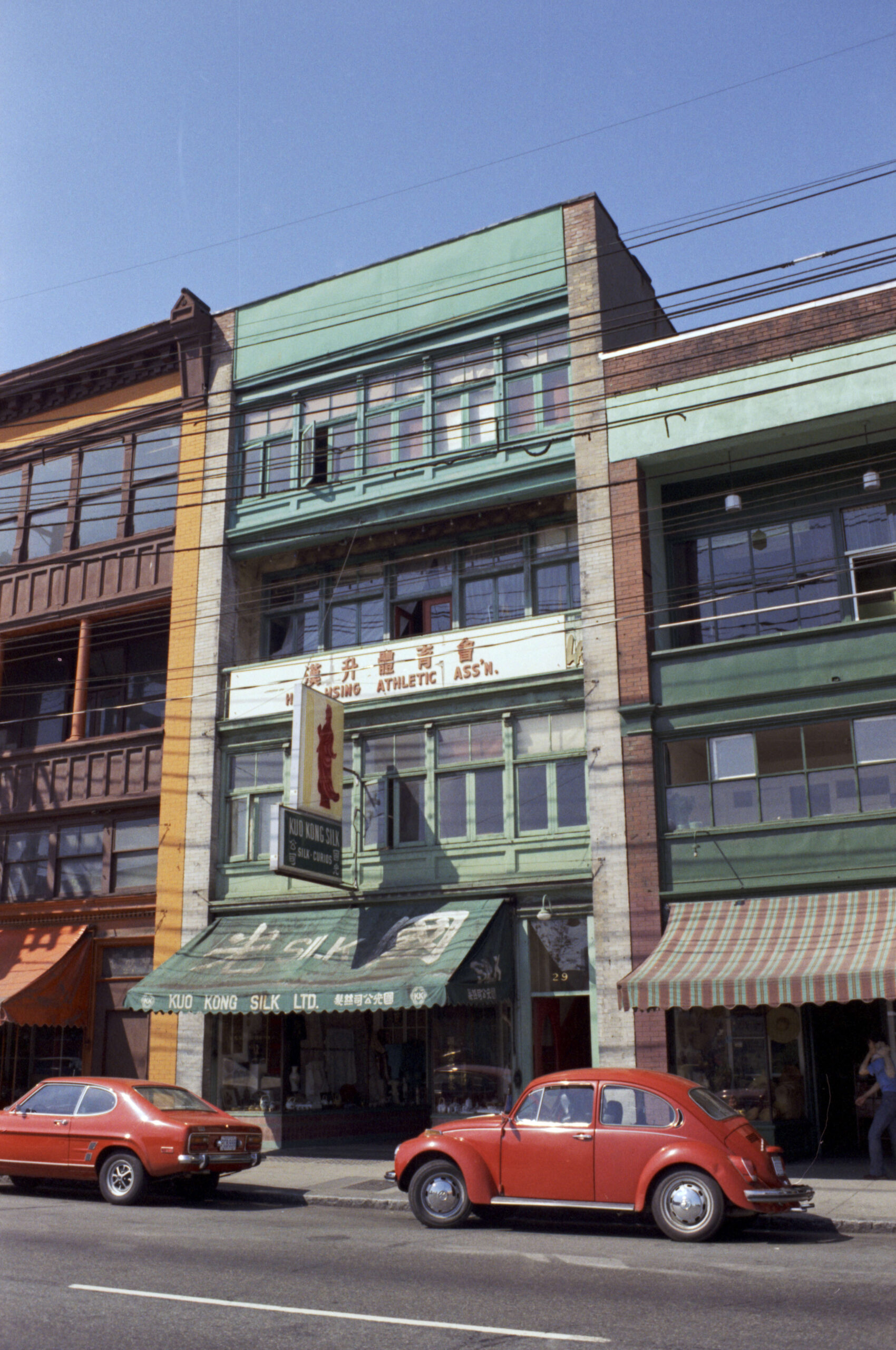
As the first and largest neon manufacturer in Vancouver, Neon Products provided signage and neon lighting to a wide variety of businesses across the province.
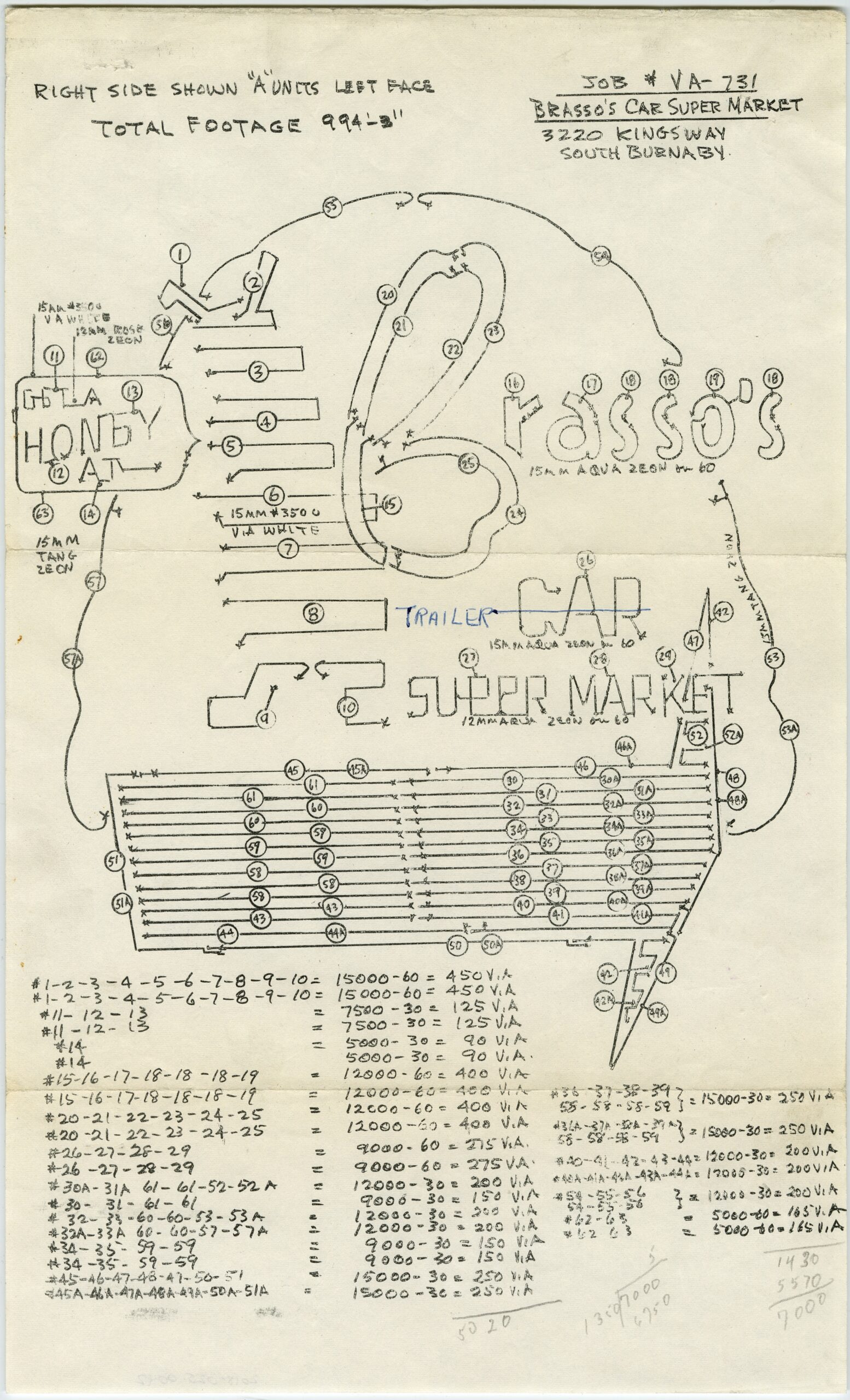
Approximately two-thirds of the files document work done for businesses outside the Lower Mainland, including a small number of files for businesses in other provinces and the Territories. Here is a sampling.
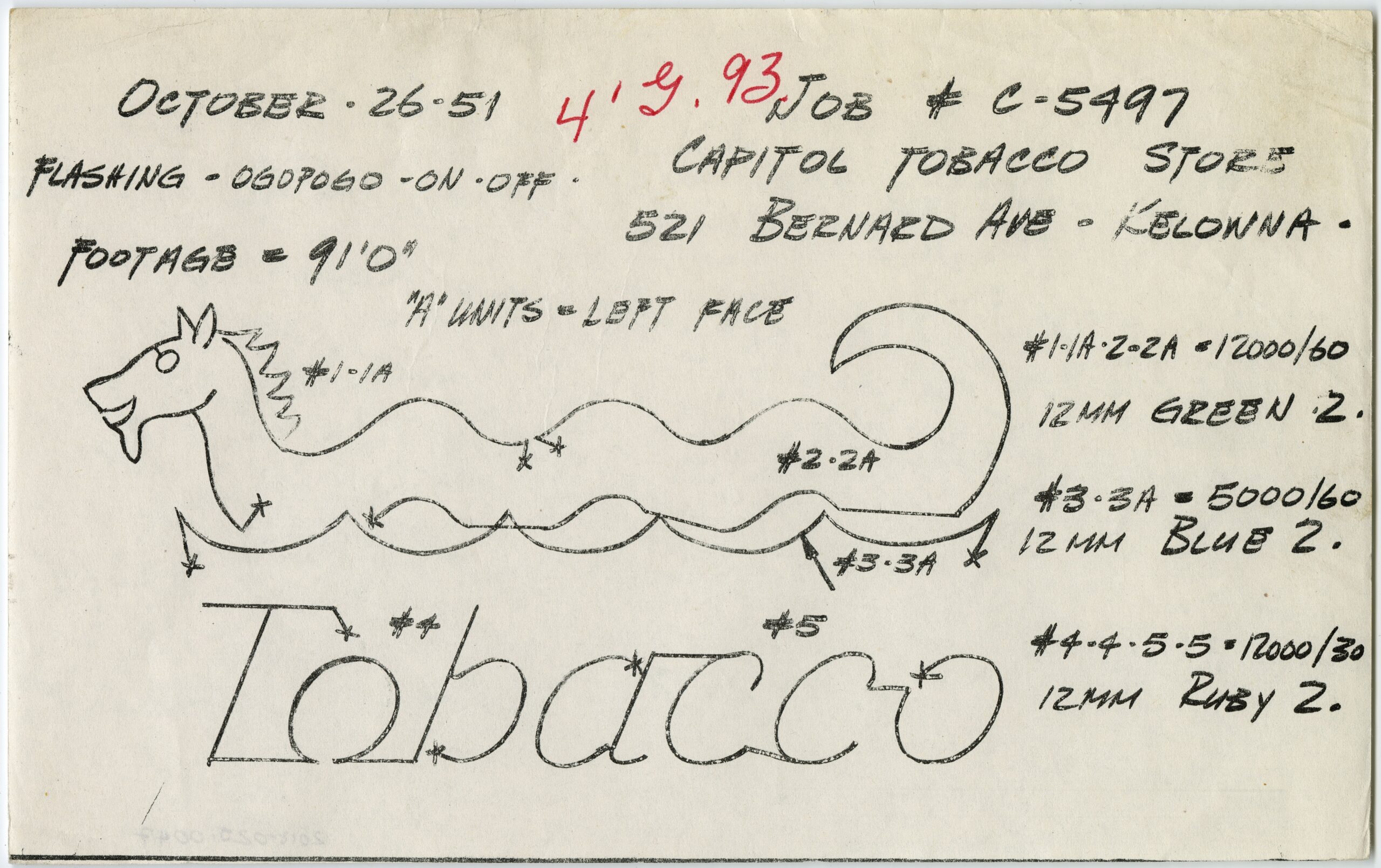
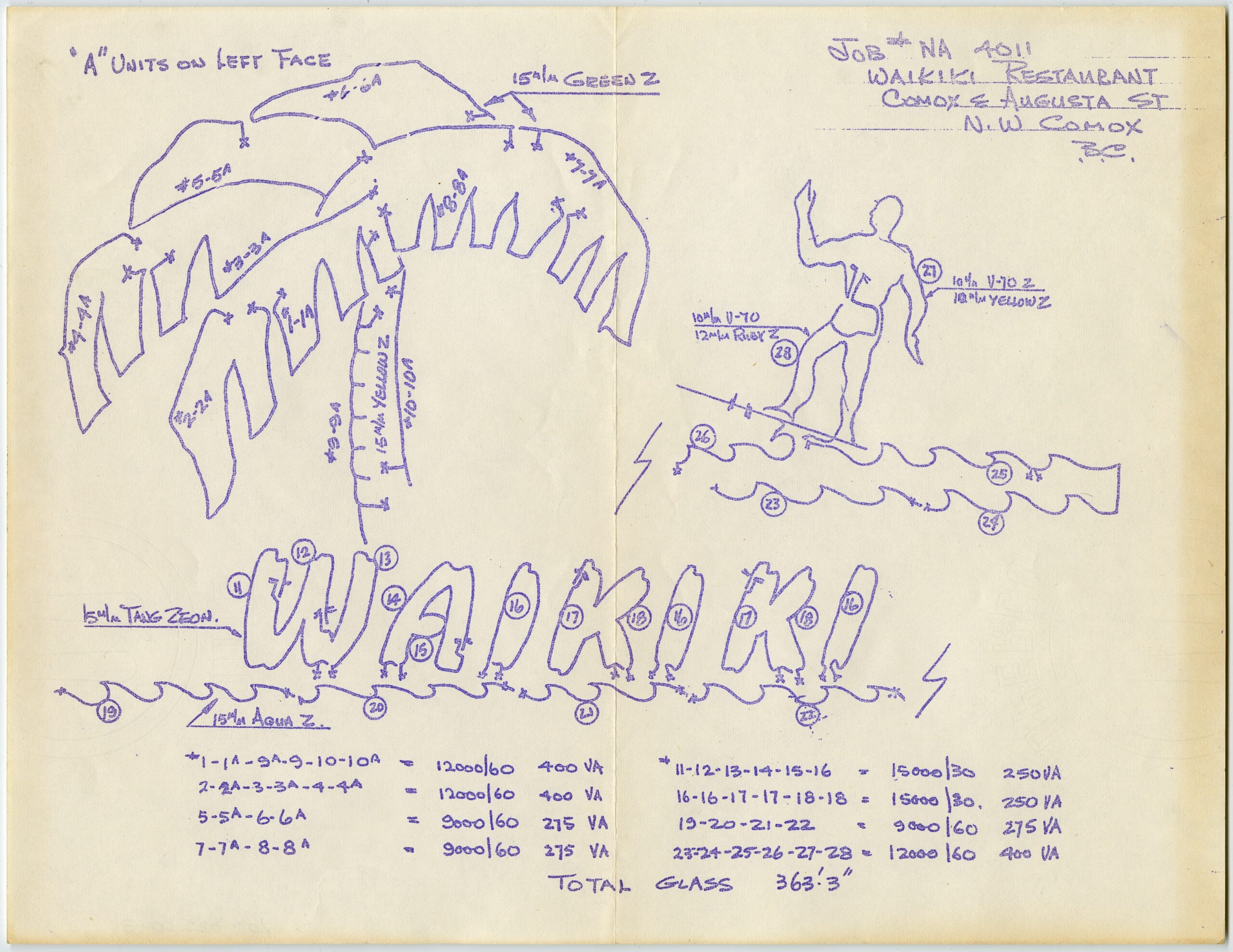
A full-colour image of the Waikiki’s extensive signage, most likely from a postcard, can be found on Pinterest.
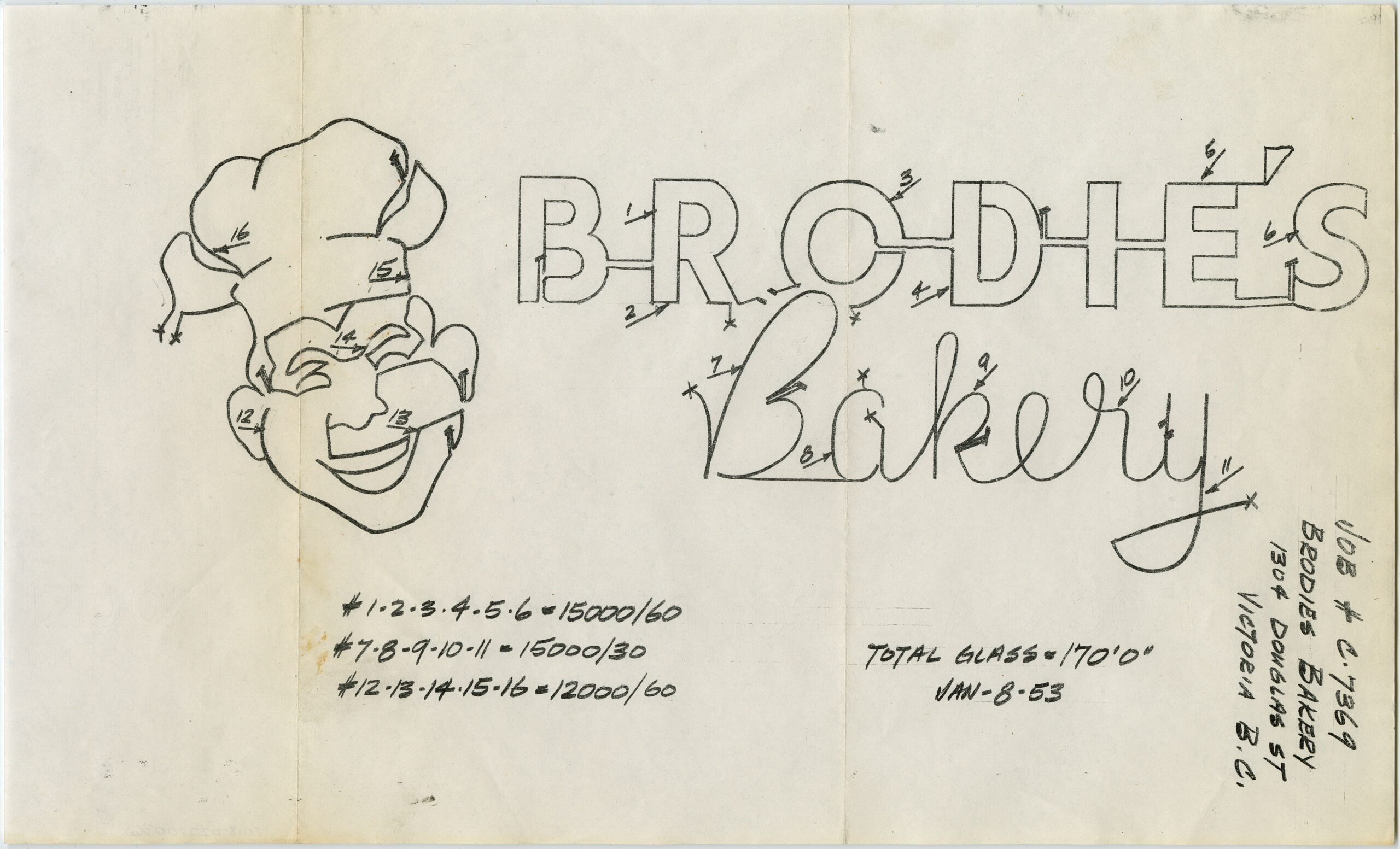
The Brodie’s sign can be seen in the middle of this streetscape image in the holdings of the City of Victoria Archives.
This sign for the Ranch Motel in Clinton, B.C. is indicative of the many signs done for hotels and motels across the province. The file is one of only two that came with photos of the completed signage.
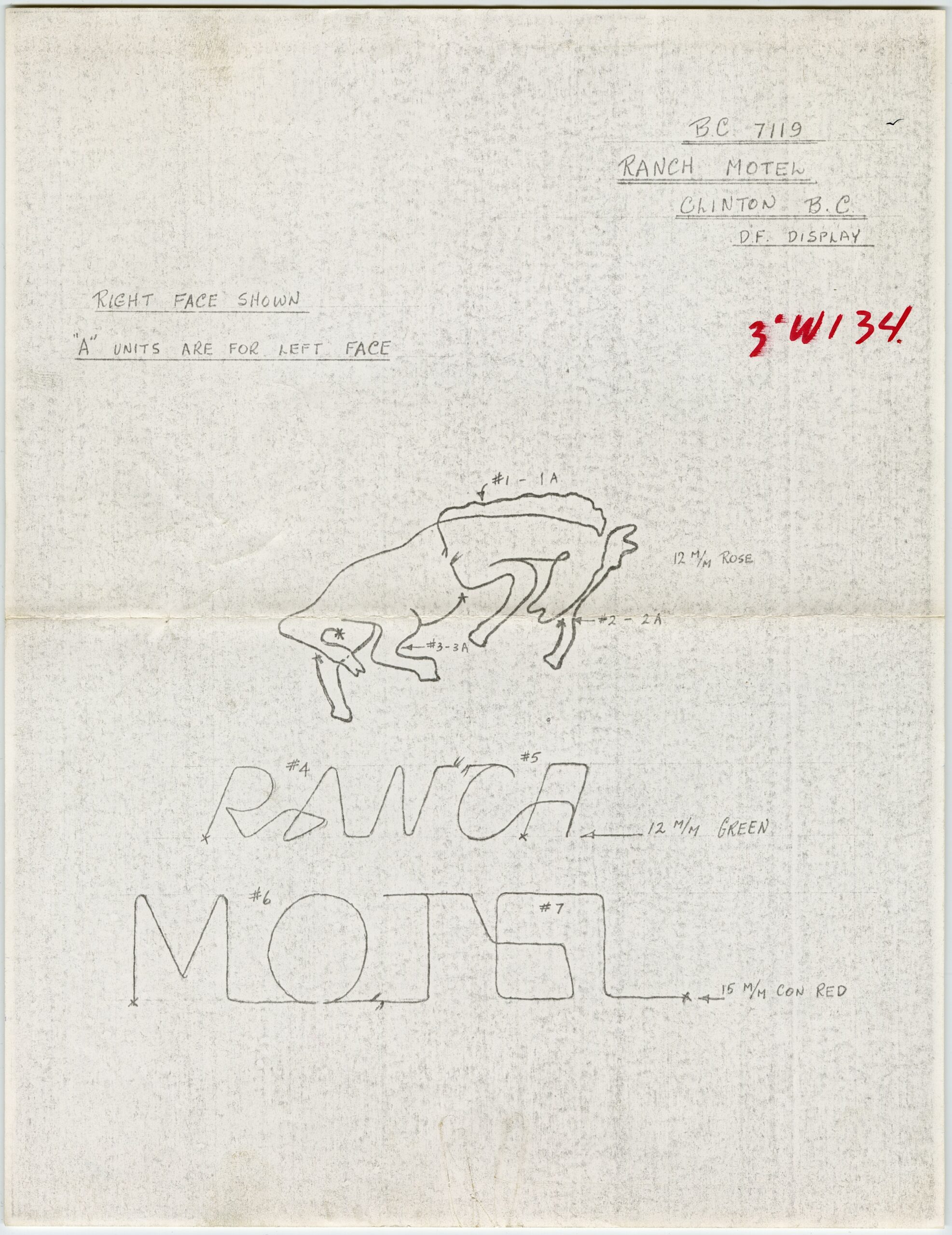
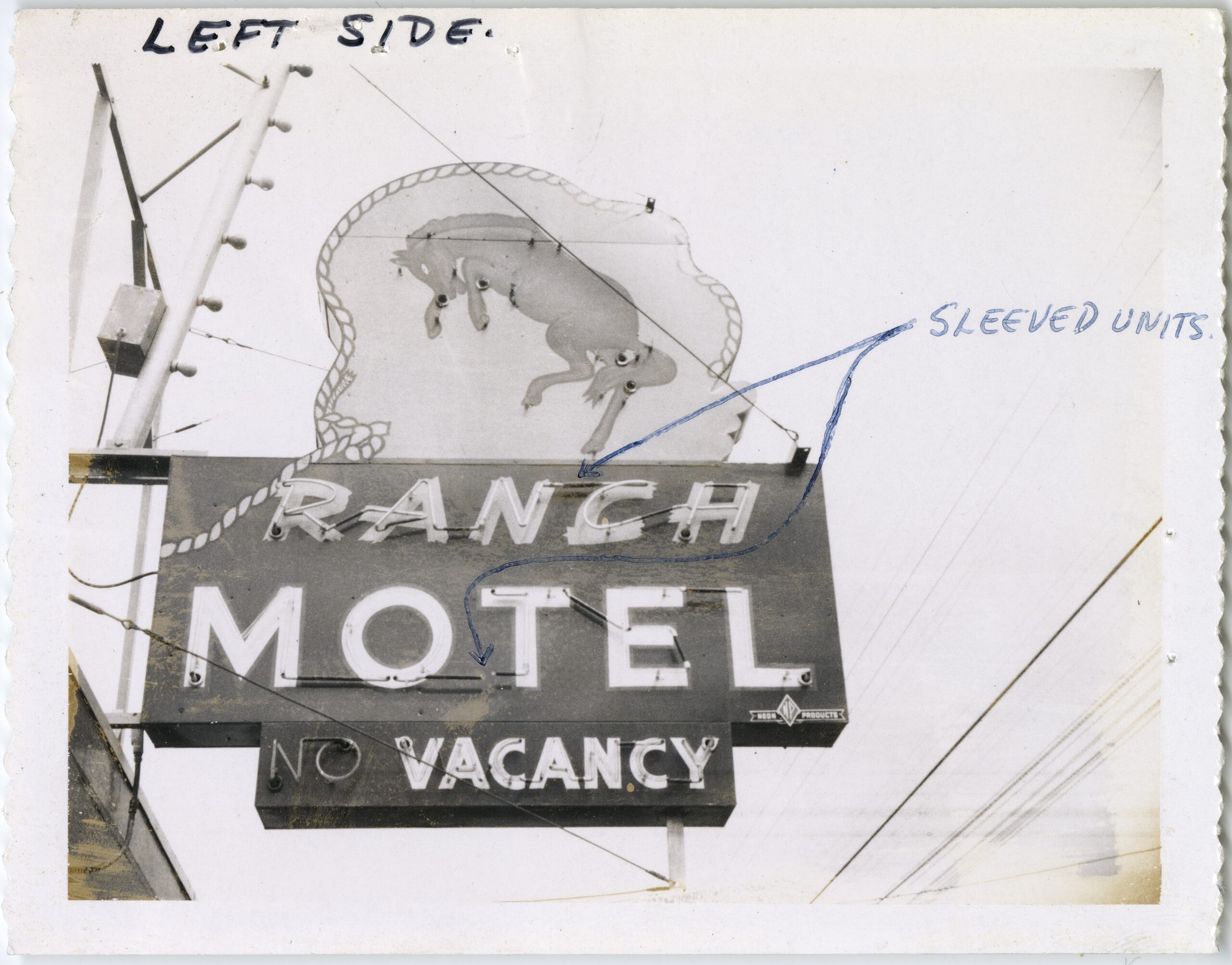
A small number of large, rooftop billboard signs with neon elements are also documented in the records, including this Westinghouse Sign at Howe and Georgia.
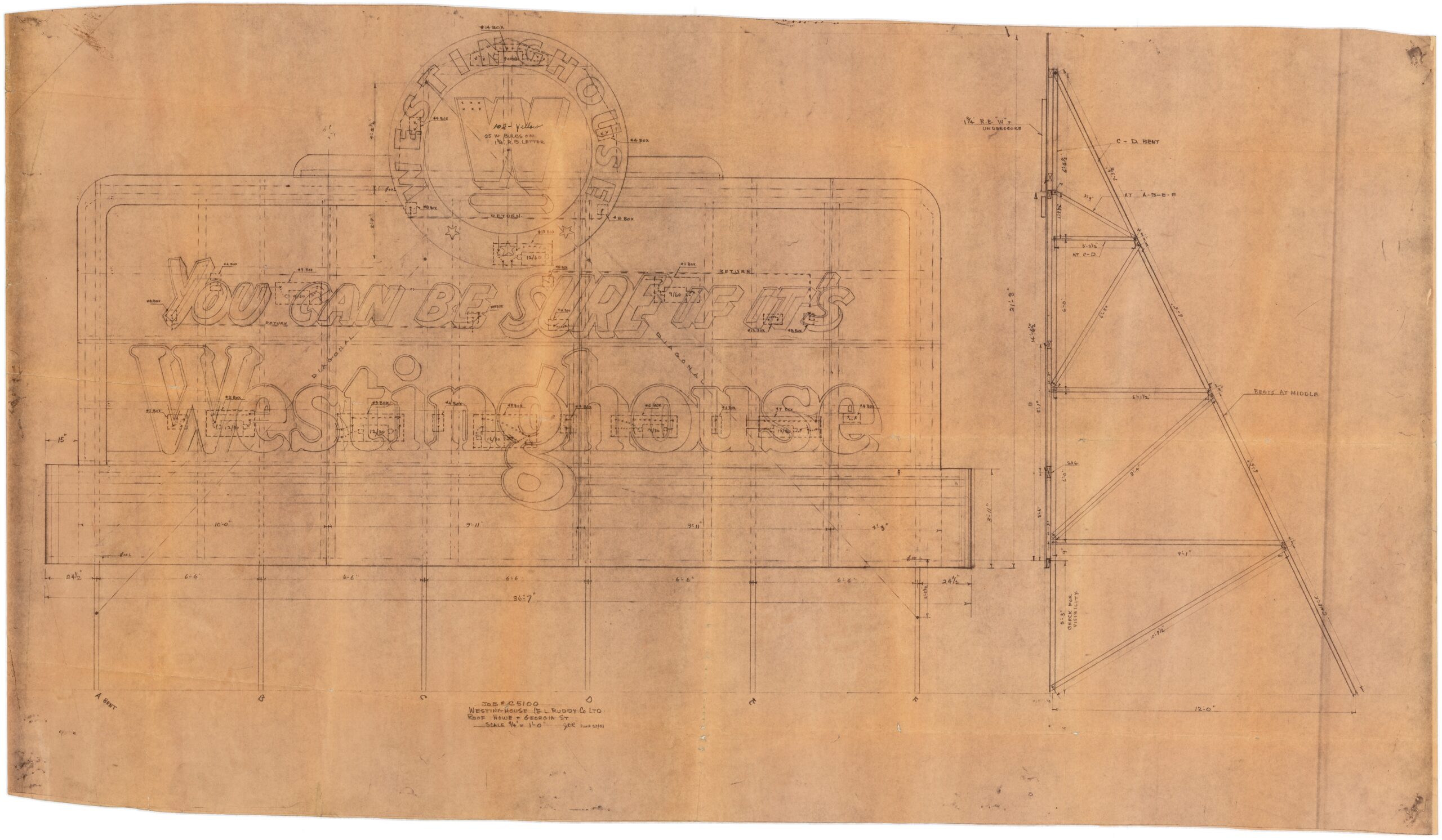
An unusual aspect of Neon Products’ business was that many of their signs were leased by clients, rather than purchased. As a result, many of the signs were re-used once no longer needed in their original location.
One example is this small sign featuring the outline of a chicken which was repurposed from its original use at the Chicken Coop in View Royal, B.C. In 1951, it was moved to The Famous Kitchen in Richmond; by 1958, the restaurant had been renamed the Rooster Café, but the little red chicken is still there, as seen in this City of Richmond Archives photo of businesses on No. 3 Road.
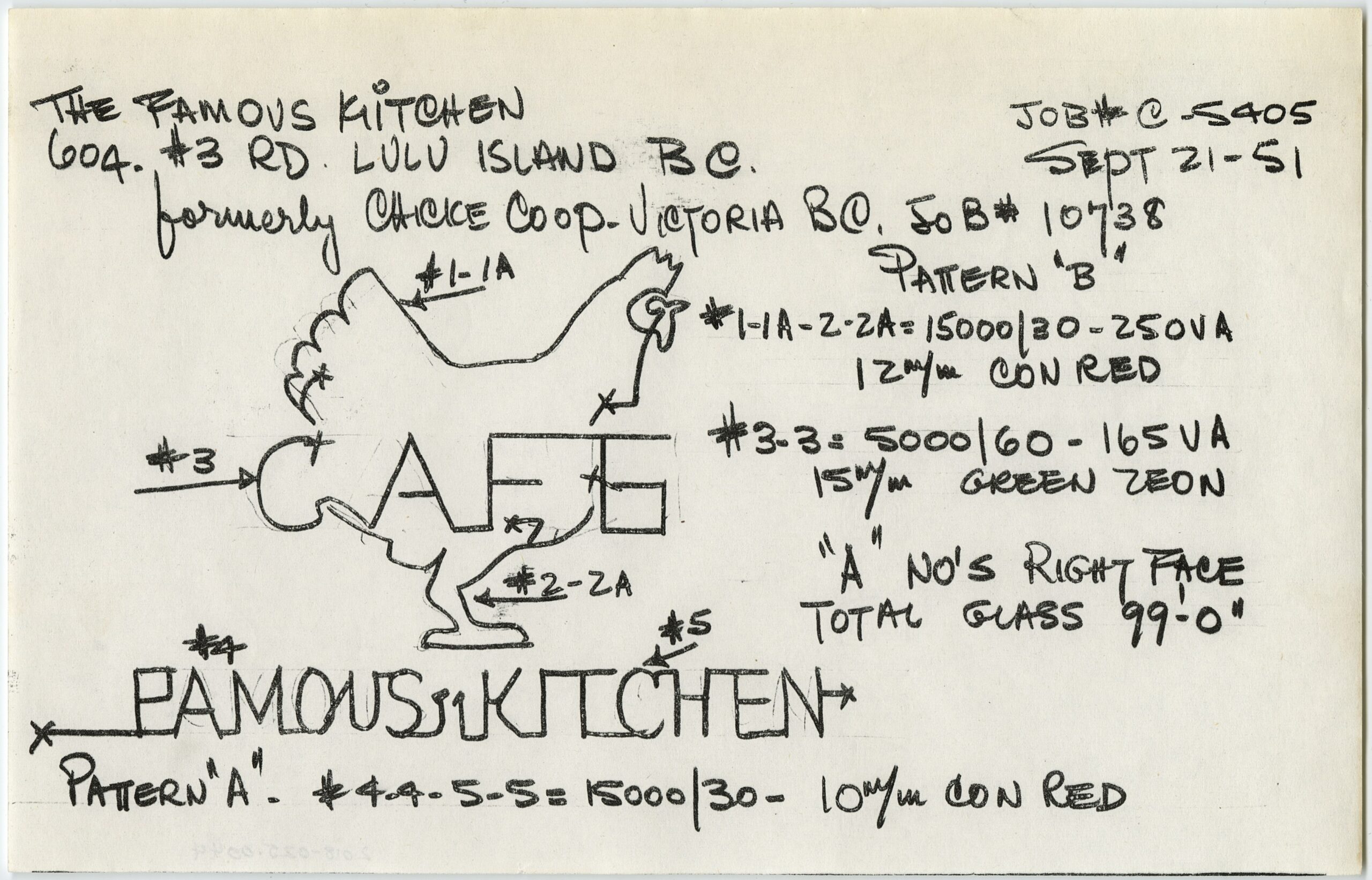
As the first neon signage company in Vancouver, Neon Products contributed greatly to Vancouver’s reputation as “Neon City”. It was later joined in this growing market in the middle decades of the century by Wallace Neon, Neolite, Walburn Neon and others; collectively, these companies changed the nightscape of cities across the province.


